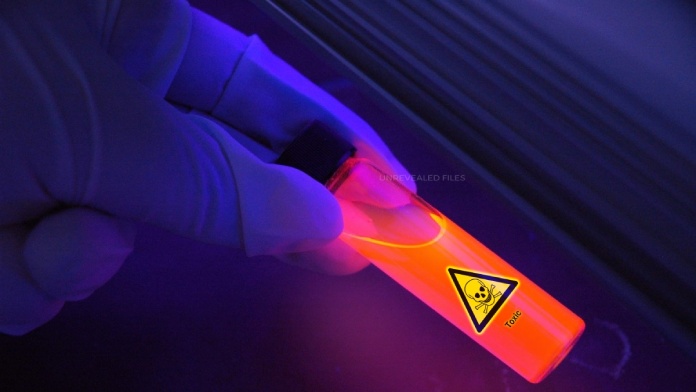
Toxins are deadly substances produced or synthesized within living cells or microorganisms in plant or animal species. Toxins are harmful as they can modify gene expression and damage DNA, increasing the rate of aging and degeneration. In addition, toxins poison enzymes, displace structural minerals, damage the cell membranes and organs, interfere with hormones, and impair our ability to detoxify the body.
The harmful effects of toxins are enormous, but the interest is focused on bacterial toxins, poisons derived from snake venoms, algae, plant proteins, small molecules, microbes, and fungi; they are a unique subgroup of bio-threat pathogens and known as Biotoxins.
In this article, we will learn in-depth about Toxins; particular attention is focused on the so-called Biotoxins, which come in many forms and can be produced by nearly every type of living organism like Mycotoxins (made by fungi), Zootoxins (made by animals), and Phytotoxins (made by plants), etc. In today’s world, they can be used as Biological weapons, including infectious agents and poisons produced by living organisms relevant to Bioterrorism.
Contents
What are Toxins?
“Toxins” was derived from the word toxic, which means harmful substances produced or synthesized within living cells or microorganisms in plants or animals. Synthetic toxins created by artificial processes are artificial toxins. Organic chemist Ludwig Brieger first used the term “Toxic.”
Toxins are mainly secondary metabolites, organic compounds not directly involved in an organism’s growth, development, or reproduction; instead, they often aid it in defense. Toxins vary according to their toxicity range, usually from minor such as a bee sting, to almost deadly, as they can kill the host immediately.
Toxins can be small molecules, animal or plant venoms, chemical poisons, peptides, or proteins capable of causing disease on contact with or absorption by body tissues interacting with biological macromolecules such as enzymes or cellular receptors.
International Committee of the Red Cross review of the Biological Weapons Convention explains Toxins as poisonous products of organisms; unlike biological agents, they are inanimate and incapable of reproducing themselves. Since the signing of the Constitution, there have been no disputes among the parties regarding the definition of biological agents or toxins.
Title 18 of the United States Code explains toxin as the toxic material or product of plants, animals, microorganisms or infectious substances, or a recombinant or synthesized molecule, and are not only limited to, bacteria, viruses, fungi, rickettsiae, or protozoa; their origin and method of production may be any type.
Toxins are often differentiated from other chemical agents by their mode of production. Thus the term toxin does not define the distribution method (compared with venom and the broader definition of poison, all compounds that may also cause disruptions to organisms). Instead, it means it is a biologically created poison.
A relatively informal terminology of individual toxins relates them to the anatomical location where their effects are most notable. For example, hemotoxin destroys red blood cells (hemolysis), and Phototoxin causes dangerous photosensitivity.
On a broader scale, toxins may be classified as either exotoxins, excreted by an organism, or endotoxins, released mainly when bacteria are lysed. And on a wider scale, Environmental toxins, Biotoxins, etc. However, the most known toxins have been explained below.
What are Environmental Toxins?
Synthetic contaminants of industrial pollutants and other artificially made poisonous compounds are known as environmental toxins. In addition, chemicals and heavy metals that are distributed in the atmosphere, organic and inorganic toxins, pesticides, and biological agents, all of which can have adverse effects on living organisms, can contribute to toxicants being found in our food.
Environmental contaminants include beams and waves of electromagnetic radiation such as x-rays, radar, radio waves, and particle radiation such as alpha and beta particles and neutrons.
When humans and animals are exposed to high radiation levels, cancer, congenital disabilities, and skin burns can develop. When plants are exposed to high radiation levels, they also have issues. For example, the nuclear radiation from the 1986 Chornobyl disaster destroyed the reproductive tissues of the surrounding plants, and it took three years for these plants to recover their reproductive abilities.
The harmful effects of such chemicals and radiation will reduce the diversity and abundance of species in an organism and its environment. Changes in population dynamics affect the ecosystem’s productivity and stability.
Many formal meanings of the word “toxin” contradict the term “environmental toxin,” so the researcher should clarify what he means when encountering the time outside microbiological contexts. On the other hand, ecotoxicology is a branch of environmental toxicology that studies the harmful effects of toxicants at the population and ecosystem levels.
What are Biotoxins?
Biotoxins are poisonous compounds that have a biological basis. Mycotoxins (made by fungi), Zootoxins (produced by animals), and Phytotoxins (made by plants) are among the many types of toxins that can be created by nearly any living organism. Although some seem to have little benefit to the organism producing them (for example, they may be a waste product), the majority are created to aid in two key activities – predation and defense against predation by other organisms – and thus play critical roles in the organism’s life cycle.
Biotoxins vary in function/mechanism and shape, allowing them to be used for various purposes or none. They can range in size from large complex molecules to relatively simple proteins. Orally ingesting them, injecting them as poison, or releasing them into the atmosphere through a form of pore are all options that can be deadly.
Microorganisms develop toxins that are essential virulence determinants for microbial pathogenicity and evasion of the host immune response. Biotoxins can be highly complex (the cone snail’s venom contains dozens of small proteins, each targeting a specific nerve channel or receptor) or relatively simple.
The term “biotoxin” is sometimes used to confirm the biological origin explicitly and thus can be classified as marine biotoxins, fungal biotoxins or microbial toxins, plant biotoxins, and animal or insect biotoxins. Below we have explained all these in detail.
Marine biotoxins
The ocean biome features some of the most diverse species, and many of them produce biotoxins. For example, the Stingray, a member of the suborder Myliobatoidei, is a flat-bodied, cartilaginous, bottom-dwelling fish similar to sharks and distinguished by its long spiny tail. These barbed spines contain venom (a nerve toxin) that stingrays use in self-defense when attacked. Since the poison is carried in two glands under the spine and concentrated in the skin around the spine, when the spine penetrates another individual, the venom reaches directly into their skin, causing a painful wound that may or may not be lethal, depending on the region penetrated.
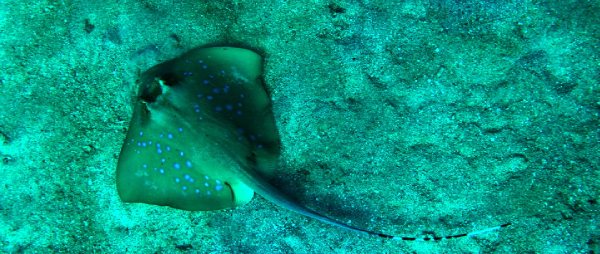
Lionfish, which belong to the Pterois family, are known for their toxic spiked fins and tentacles that cover their bodies and are used for defense rather than capturing prey. However, they have potent venom, making them deadly to swimmers and fishermen around the reefs where they live. In addition, they can cause intolerable pain in humans, nausea, and fever (although this rarely results in death). Although these fish are toxic, they are still used in cooking worldwide.
The horseshoe crab, Limulus polyphemus, is a marine arthropod more closely related to spiders and scorpions than to crabs. It’s regarded as a living fossil. Tetrodotoxin (a highly toxic poison) is sometimes found in the gonads of horseshoe crabs in Thailand. Poisoning will occur if this is ingested due to insufficient preparation, and the toxin can interfere with nerve signals to muscles, resulting in muscle paralysis and even death.
In addition, since the crab’s blood contains a protein called LAL (Limulus Amebocyte Lysate), which clots when it comes into contact with toxins, it is used in tests to detect the presence of endotoxins. This test prevents bacteria from adhering to medical equipment and causing infection. The LAL test can also see and identify cancerous cells, which could be helpful in the creation of new therapies that include endotoxins.
Sea anemones, another deadly marine creature that seems like a water plant, are predatory animals living beneath the sea. They are cnidarians, which means they are similar to jellyfish and corals. They have nematocysts, stinging cells with blisters filled with toxins that assist the anemone in catching its prey. They are triggered when something touches a hair on the cell’s outer surface, and they release a small amount of neurotoxin that paralyzes the passing organism (such as a fish or a shrimp). A tentacle would then move the paralyzed prey into the mouth.
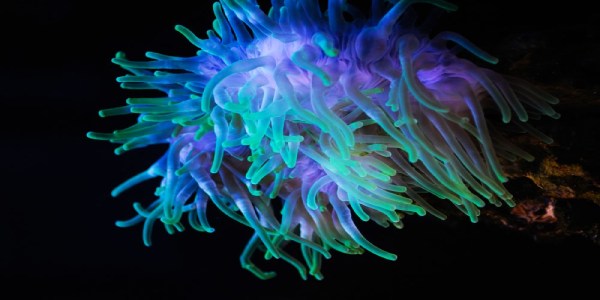
Jellyfish belong to the Cnidaria phylum, and specimens dating back 500 million years have been discovered. They’re free-swimming, planktonic (can’t swim against the flow of water) marine creatures that can be found in any body of water on the planet, but only those that live in seawater can sting. They, like sea anemones, sting their victims with nematocysts, injecting their venom into the victim’s skin. Since some jellyfish are so poisonous that they can bite even when beached or dead, it’s best to stay away from them without protection.
The cone snail is a venomous, mostly tropical snail with a colorfully patterned shell from various species. Some animals, particularly the larger ones, can be hazardous to humans. These snails will strike and inject venom into their prey using a radula tooth that extends from the throat (it looks like a dart or a needle) that paralyzes the victim. They can also shoot darts in all directions, which is how they often wound humans. If the victim is a small fish or other aquatic creature, the snail may lure it in and consume it. If a person is harmed, the toxins can cause anything from a minor sting to a severe illness that can be fatal.
The regional cone snail, one of the giant cone snails, is highly toxic, with just a 30% chance of survival after being stung due to the lack of an antidote. Cone snail venom comprises various toxins (up to 200), all of which are neurotoxins that attack nerves and block receptors, resulting in paralysis. According to new research, the toxins in cone snail venom have properties similar to morphine (in that they block nerves, and thus, the pain sensation happens). They, therefore, may help develop painkillers in the future, especially for cancer patients.
Biotoxins Produced by Microorganisms
Microbial toxins are biotoxins formed by microorganisms such as bacteria and fungi. Fungal biotoxins, also known as mycotoxins, are biotoxins produced by the fungus kingdom. Microorganisms and fungi contain a variety of toxins, which are also used to help in the invasion of other organisms. Both microbial toxins and Mycotoxin have been thoroughly explained below.
Fungal biotoxins or Mycotoxin
Fungal biotoxins, also known as mycotoxins, are a form of secondary metabolite formed by fungi that can cause disease and death in humans and other animals.
Due to the tiny size of their spores, most fungi are aerobic (use oxygen) and can be found almost anywhere in minimal amounts. However, they eat organic matter wherever there is enough humidity and temperature. Fungi increase into colonies when the conditions are correct, and mycotoxin levels rise. The reason for the production of mycotoxins is unknown; they are not needed for fungi growth or development.
Mycotoxins can improve the environment for further fungal proliferation by weakening the receiving host. However, toxin formation is influenced by intrinsic and extrinsic conditions, and the toxicity of these compounds varies greatly depending on the infected organism’s tolerance, metabolism, and protection mechanisms.
Aspergillus species, such as A. flavus and A. parasiticus, contain aflatoxins, a form of Mycotoxin. Ochratoxin is a mycotoxin found in three secondary metabolite forms: A, B, and C. Penicillium and Aspergillus species have them all.
Patulin is a toxin produced by the fungi Paecilomyces expansum, Aspergillus niger, Penicillium niger, and Paecilomyces niger. Citrinin is a toxin that was first discovered in Penicillium citrinum but has since been found in over a dozen other Penicillium species and many Aspergillus species. More than 50 different Fusarium species create fusarium toxins, and they’ve been known to infect the grain of developing cereals, including wheat and maize.
The sclerotia of Claviceps species, common pathogens of various grass species, contain ergot alkaloids, a toxic mixture of alkaloids.
As a result of the fungal infection of crops, mycotoxins can enter the food chain, either by being consumed directly by humans or being used as livestock feed. In addition, wild mushrooms contain various toxins that are unmistakably fungal metabolites that cause serious health issues in humans.
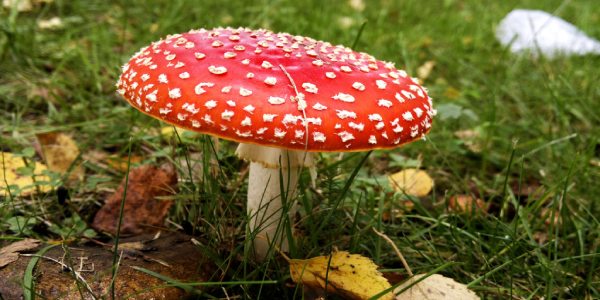
Via ingestion, skin touch, inhalation, and entry into the bloodstream and lymphatic system, mycotoxins can cause both acute and chronic health effects. Protein synthesis is inhibited, macrophage systems are damaged, lung particle clearance is inhibited, and bacterial endotoxin sensitivity is increased. Since mycotoxins are resistant to decomposition and digestion, they persist in the food chain in meat and dairy products. Some mycotoxins are not destroyed by heat treatments such as cooking or freezing.
Microbial toxins
Microbial toxins aid in the spread of infection and disease by causing direct damage to host tissues and weakening the immune system.
Botulinum neurotoxins, for example, are among the most active natural toxins known. Microbial toxins, on the other hand, have significant applications in medical Science and research. For example, toxin studies may fight microbial virulence, create new anticancer drugs and other medicines, and use toxins as tools in neurobiology and cellular biology, among other things.
Necrotizing fasciitis is a life-threatening flesh-eating disease that affects the skin and is caused by various bacteria. Staphylococcus aureus is one of these, and the methicillin-resistant strain is the most common cause (MRSA).
The bacteria don’t consume the flesh but release toxins that damage the tissues, such as streptococcal pyogenic exotoxins, which can stimulate the immune system’s T-cells and lead to toxic shock syndrome (a severe side effect). In addition, necrotizing fasciitis develops when bacteria come into contact with the body after some trauma, even mild ones like a paper cut.
Cyanobacteria (also known as blue-green algae) are a group of bacteria found on land, in the seas, and oceans worldwide. They’re most commonly seen as ‘blooms’ that form in water and resemble algae, which is why they’re often called blue-green algae. These blooms can develop and spread rapidly, posing a threat to other aquatic species because they can sometimes contain cyanotoxins.
These toxins may take several forms, influencing water-dwelling species in various ways and indirectly affecting and poisoning humans who might consume some toxins-infected marine creatures or drink the contaminated water. In addition, the effects of these toxins on humans differ depending on how they are ingested, ranging from nausea to allergic reactions to liver damage.
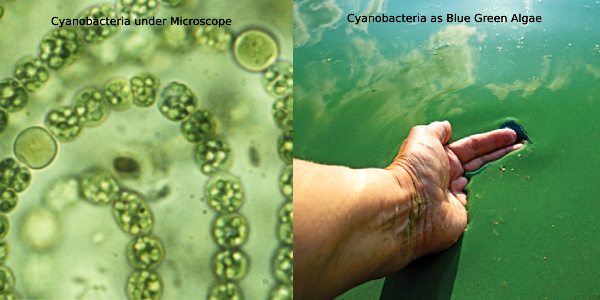
Botulism is caused by the Clostridium botulinum bacterium’s neurotoxins, which cause muscle paralysis. These toxins form when foods, such as beans, are poorly stored, such as when they are home-stored and do not have the appropriate storage conditions, such as pH or strain, and they can be lethal to those who consume them. Botulinum toxin is also used in the ‘Botox’ procedure, which involves injecting a small dose of the poison into the skin to paralyze specific muscles.
This can treat medical conditions like trigeminal neuralgia (facial pain) and cosmetic procedures. Aside from that, botulinum toxin is a possible bioweapon threat: just 500g of the substance will destroy half of the world’s population.
Bacillus anthracis causes anthrax, an infectious disease that is sometimes fatal. In humans, it primarily affects the lungs, gastrointestinal tract, and skin. Anthrax can be contracted in three ways: cutaneously (via scrapes in the skin), inhalation (via inhalation of spores), or gastrointestinally (via ingestion of spores) (by eating infected meat). The spores can germinate once within the body and release three proteins, which can be lethal to humans when combined.
These proteins are responsible for the disease’s effects (including tissue death and internal bleeding). In addition, anthrax has been used for Bioterrorism due to its ability to withstand harsh environmental conditions and its contagious nature (it can be transmitted by clothing). In the United States, for example, anthrax-infected letters were sent in the mail in 2001, infecting 22 people and killing five.
Tetanus is caused by the bacteria Clostridium tetani, which produces two potent toxins. Tetanospasmin is the one that causes the symptoms of the disease. The symptoms of this toxin are similar to those of botulinum toxin, but they are not the same. Tetanospasmin causes muscle spasms, which cause the body’s skeletal muscles to become rigid and can lead to the respiratory system failing. However, there is a means of disease prevention in the form of a vaccine, which has significantly reduced infection rates worldwide since it became widely used.
Plant Biotoxins
Plant biotoxins, also known as phytotoxins, can appear harmless at first sight, but many contain toxins harmful to humans and other animals. For example, the autumn crocus (Colchicum autumnale) is a spring and winter flowering plant with large flowers and no leaves. Unfortunately, it’s a poisonous plant, and all sections have been discovered to contain toxins, particularly the bulb, which has the highest toxin concentration.

The consequences of coming into contact with this poison can range from skin allergies to death, making it extremely dangerous. There have been several confirmed cases of autumn crocus-related deaths (for example, some people have mistaken it for wild garlic and eaten it). The symptoms of this plant’s toxicity are often similar to those of arsenic poisoning, and there is currently no treatment, demonstrating how poisonous it is. However, it has been shown to help treat gout and rheumatism, as well as leukemia, in limited doses and is used in medicines for these conditions.
Ricinus communis, the castor oil plant, produces seeds that contain the toxin ricin. If ingested, this toxin may be fatal to humans. The castor oil plant is the world’s most lethal plant (as little as four or five seeds can provide a lethal dose). However, fatalities are uncommon because the effects take time to appear (due to the toxin’s mechanism of action: which stops protein production in the body). A full recovery can often be achieved with the app. Because of its toxicity, the plant has a natural defense against pests; as a result, ricin is being studied to see whether it may be used as an insecticide.
Belladonna, or Atropa belladonna, is a plant that belongs to the Solanaceae family and is one of the most dangerous in the UK. This plant’s berries and leaves are highly toxic since they contain anticholinergic alkaloids that can cause hallucinations and other side effects. A kid can be killed by 2-5 berries, while an adult can be killed by 10-20. It has been used to make poison-tipped arrows and as a poison for assassination throughout history, much like Aconitum napellus.

‘Monkshood’ or ‘wolfsbane’ are two common names for Aconitum napellus. Hairless stems and rounded, hairless leaves characterize this perennial plant. It contains poisonous alkaloid compounds, including a cardiac poison used to tip weapons to kill enemies throughout history. Since it has an unpleasant taste, accidental poisoning is uncommon. Some Chinese medicines contain aconite, a chemical formed by the plant’s roots. Overdosage caused by abusing these medications, on the other hand, can cause nervous system and cardiovascular damage and death in severe cases.
The toxin from the marigold plant (more precisely, the marsh marigold) causes damage to the nervous system and digestive and respiratory systems in the larvae of many insects. Therefore, it is commonly used as a nematicide and insecticide. This toxin is present mainly in the plant’s developing shoots and can irritate and blister the skin if it comes into contact with it. If the poison is swallowed, it can be highly toxic until digested – this often occurs due to the plant’s use in herbal medicines.
Animal or Insect biotoxins
Toxins produced by poisonous and venomous animals, birds, and insects kingdom are known as Zootoxins. Below we have explained some of the most dangerous Zootoxins.
The scorpion is a predatory arachnid with distinctive front claws and a stinger (also known as a telson) attached to its tail. While all scorpions are venomous and use their venom to paralyze their prey, only a few species (roughly 25) have poison powerful enough to hurt or destroy humans.
The Buthidae family, found in the Mediterranean region and distinguished by triangular sternums, accounts for most of these, including all deadly ones. Scorpions use their venom to defend themselves when they are attacked or mating. Like many others, their venom is made up of several different compounds that, when combined, are poisonous to the organism being attacked.
Local tissue inflammation and neuromuscular symptoms are envenomation’s most common side effects. The effectiveness of the venom injected and how close the entry site was to the bloodstream determine how quickly symptoms occur.
Some butterflies, like the Monarch butterfly, are mildly toxic since they eat poisonous plants like milkweeds as caterpillars. They are never deadly enough to kill an animal, but the toxin tastes awful, and any animal, such as a bird, that tries to eat one will be discouraged from doing so again. Since being poisonous offers protection, non–toxic butterflies also imitate the patterns of poisonous butterflies (bright colors and eyes) to achieve the same security.
The cane toad (Bufo marinus) is a giant land toad native to the Americas that was introduced to Australia to control pests (although now it has become a pest itself). When the toad feels threatened, such as by a predator, it develops toxins (bufotoxins) in parotoid glands on its body, which are secreted as a milky-looking liquid. The toad’s skin is also poisonous, and ingesting it can be lethal to certain animals, including humans. The core is the critical target of cane toad venom.
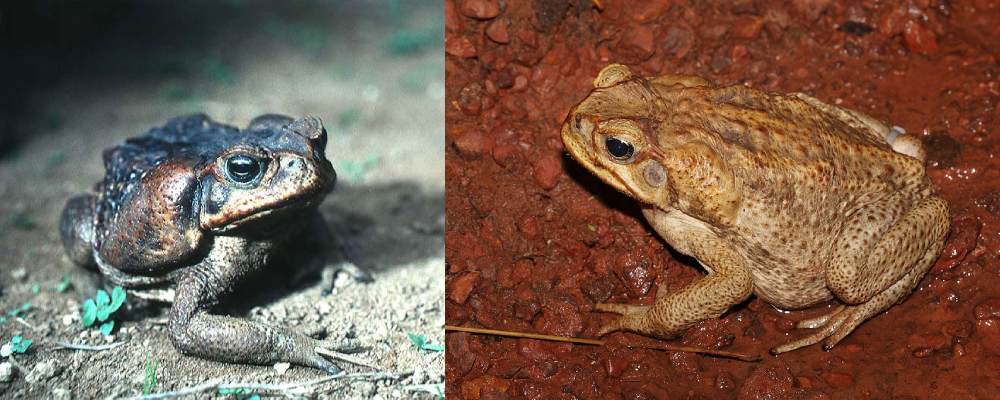
Poison dart frogs are found only in South America, and their bright colors and patterns indicate their toxicity to any species wanting to eat them. While some species of poison dart frogs are more dangerous than others, they all have a level of toxicity in their skin, and their poison is often used to tip darts and spears by those indigenous to the areas where the frogs are found, making them poisonous.
The poison of these frog species is for protection, just as it is for people who use poisons in their weapons. Recent research has shown that the toxins derived from these frogs may have therapeutic benefits, including painkillers that are more potent than morphine and appetite suppressants.
The platypus (Ornithorhynchus anatinus) is a semi-aquatic animal with only five monotremes surviving. It’s also the world’s only egg-laying mammal. Platypuses have short, hollow spurs on their rear legs, but only the males’ are attached to venom glands and contain venom.
By the time they were a year old, the female’s spurs would have fallen off. This venom is made up of proteins contained only in platypuses, and when combined, they are strong enough to destroy dogs and inflict severe pain on humans. Since this venom appears to be produced only during their reproductive season, it may be a defense mechanism against other males as well as a defense mechanism against predators. In recent pIn studies, platypus venom has been linked to pain relief and antibiotic development.
The tarantula is a giant venomous arachnid spider with a hairy body. While all tarantula species are venomous, none have been known to bite and kill humans. In pain and reaction, most bites are similar to wasps or bee stings, with one African species causing hallucinations in certain victims. In addition, some substances are injected with chemicals, which triggers allergic reactions in certain people. When the spider squirts venom, it also fires urticating hairs into the air, which can cause complications for humans if they get into their eyes.
Shrews, like the platypus, are small mammals with an odd characteristic: certain species of shrews have venom in their teeth. When a shrew is searching for food, this toxin is handy because it can quickly destroy mice once bitten. In addition, this toxin can be helpful in the medical field once more. This involves extracting one of the venom’s compounds to lower blood pressure in hypertensive patients.
The order Hymenoptera includes wasps, ants, and bees. An ovipositor is a long, thin, hollow structure found in females that are used to lay eggs. However, in some insects, this tube has evolved into a sting with a gland at the base that, when the insect is provoked, can inject a toxin into the victim.
Wasps and bumblebees have a smooth sting with no barbs, allowing them to sting repeatedly. Some bees, such as honey bees, have barbed stings that break off when they penetrate the victim, causing the bee to die. Most humans will find these stings irritating but not dangerous unless they are allergic to the sting. Ants squirt an acid, formic acid, onto their victims with their stings.
Further classification of biotoxins
Many biotoxins can be categorized further based on their impact on the body. The following are of some kinds and groups:
- Neurotoxins are compounds that destroy tissue by causing cell death. The bloodstream is where neurotoxin spreads. The skin and muscle tissues in humans are the most vulnerable to neurotoxins.
- Neurotoxins are compounds that damage the nervous system and bind to voltage-gated sodium channels in nerve cells, causing normal neurological functions to be disrupted and resulting in the illness known as neurotoxic shellfish poisoning (NSP).
- Haemotoxins travel through the bloodstream, target red blood cells, disrupt blood clotting and cause general organ degeneration and tissue damage.
- Cyanotoxins are toxins created by cyanobacteria, which are photosynthetic bacteria that can develop in various water types. Blooming cyanobacteria can produce cyanotoxins in such high concentrations that they poison and even destroy animals and humans. This is because they multiply exponentially to form blooms.
- Dinoflagellates contain dinotoxins. Amnesic Shellfish Poisoning, Ciguatera Fish Poisoning, and Possible Estuarine Associated Syndrome are all illnesses caused by them attacking the nervous system.
- Cytotoxins: substances toxic at the level of the cell. They kill individual cells.
- Apitoxin: honey bee venom injected via the sting. Apitoxins are under preliminary research.
Biological Hazards
Substances that are both toxic and have a biological origin pose a health/death risk to humans (and, in some cases, plants, and animals). These dangers are often marked with the well-known ‘Biohazard’ sign so that anyone handling or coming into contact with the drug is aware that it poses a threat and that proper measures must be taken. The Dow Chemical Company created this symbol in 1966, later adopted by the Centers for Disease Control, the Occupational Safety and Health Administration, and the National Institutes of Health in the United States after it was published in Science.
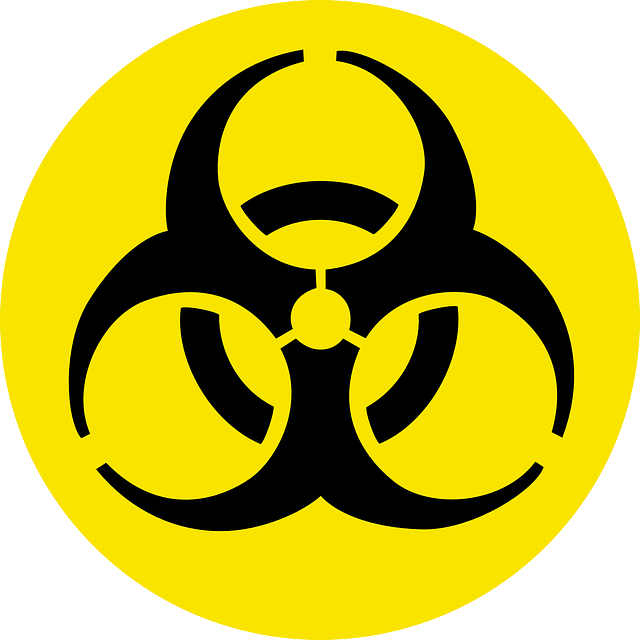
There are four types of biohazard (Biosafety Levels), as shown by the CDC (Centers for Disease Control and Prevention, USA) classification:
Biosafety Levels
- Level one of biosafety: It is the lowest level of risk, requiring the least amount of protection – such as gloves and a mask. Decontamination procedures for this stage are identical to standard hygiene practices: handwashing with soap, disinfecting surfaces, and eliminating the need for autoclave cultures. Bacteria and viruses such as chickenpox (varicella) and Escherichia coli are found at this stage.
- Level Two of biosafety: In this level, Microorganisms only cause mild disease and cannot be easily transmitted through the air. Certain species must use specific equipment and protocols to ensure that a public disease outbreak does not occur. Salmonella, influenza, and HIV are examples of such diseases.
- Level Three of biosafety: Microorganisms cause severe and potentially fatal diseases at this level. On the other hand, bugs will not make it to the top class, so vaccines will exist to protect against them. Tuberculosis, Plasmodium falciparum (malaria), and anthrax are among the diseases found at this stage.
- Level Four of biosafety: At this level, microorganisms cause severe or fatal diseases, but no treatments or vaccines are available. These must be handled with extreme caution. The lab must be secured with unique entry and exit procedures such as showers, vacuum rooms, and UV rooms to ensure that no traces of biohazardous chemicals escape the area, a hazardous materials suit must be worn at all times, and an oxygen supply must be maintained in the specified lab area. Smallpox, Ebola, and Covid-19 are the diseases included in this final level.
Use of Biotoxins as Bioweapons
Toxins are used by many animals and insects around the world both for defense and predation. Because of their high toxicity, many of the substances are mentioned on this page. Only small quantities may indeed cause disease and can kill thousands. Thus, we should learn about Biological Warfare and how to protect ourselves in such conditions. Some biotoxins have been used as biological warfare agents in the past.
Biological warfare uses biotoxins in combat, such as the ones we’ve seen. This means that bioweapons aim to injure or even destroy those on the opposite side. In this article, Biological Warfare: Emerging Weapons of Mass Destruction, learn more about biological warfare.
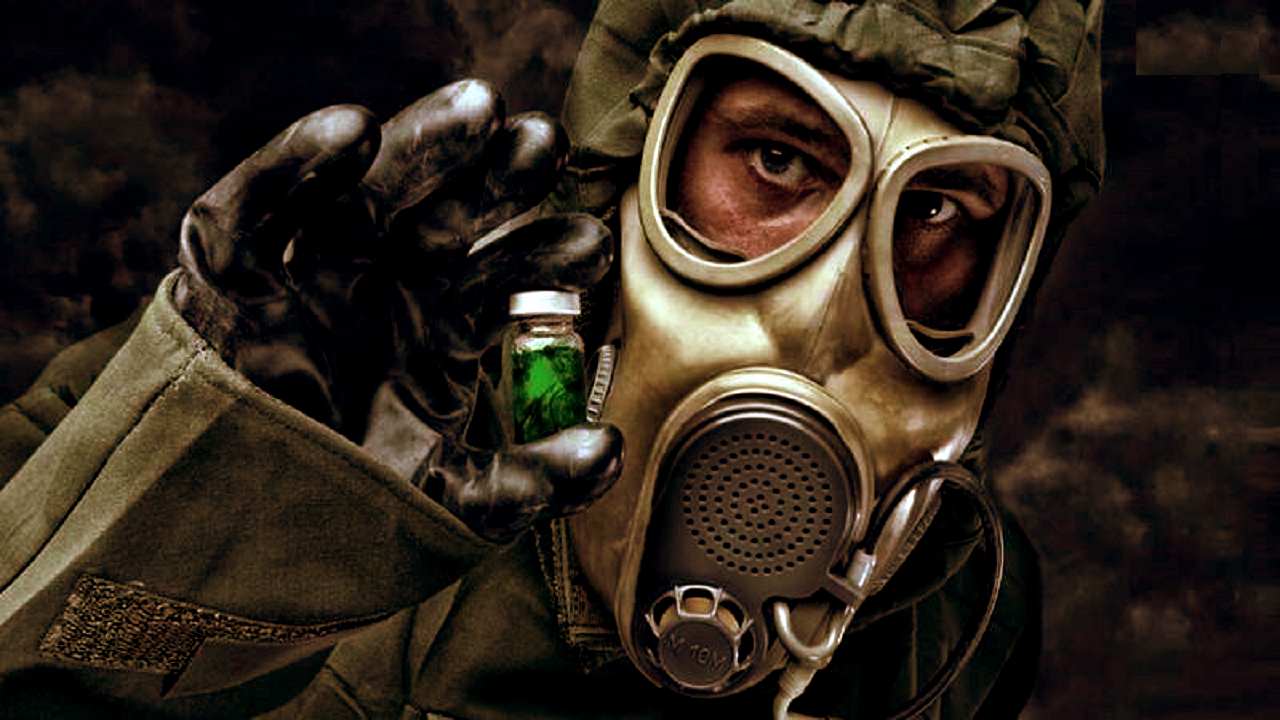
The BWC (Biological Weapons Convention) made the use of bioweapons as a means of attack illegal in 1972 to protect as many civilians as possible, as a biological attack could impact entire nations. This becomes Bioterrorism when a government, a party, or an entity uses this method of attack.
Different toxins are selected for their relative benefits (including incubation period, virulence, infectiousness, vaccine availability, and lethality) when preparing biological warfare, depending on the desired impact. The following are five agents that can be weaponized for war or terrorism.
Toxic Agents can be weaponized for warfare or Bioterrorism
- Rickettsiae are bacteria-like microorganisms that are intracellular parasites, such as typhus.
- Bacteria, such as those that cause plague or anthrax.
- Viruses such as influenza and encephalitis are examples of viruses.
- Fungi: aflatoxins from Aspergillus species, for example.
- Other toxins include animal poisons (e.g., snake or spider venom) and plant poisons (e.g., ricin toxin).
Reasons for Biological Attack
After reading this article, many questions may arise in my mind, and one of them is what are the reasons for the biological attack? And the answer is for a variety of reasons; a biological weapon may be used.
These involve focusing on and eliminating particular crops or vegetation, as well as livestock (in a war, this might mean that the opposing army would starve and therefore have less chance of holding out and winning the war). Animals and livestock can also be targeted for other purposes, such as transportation. Finally, insects may be used to invade – for example, sending disease-carrying mosquitoes into an enemy’s territory to try to spread disease. Entomological warfare is the term for this.
Agents such as ricin, anthrax, smallpox, and botulinum toxins, which are all highly dangerous to humans and may cause widespread disruption, are currently seen as possible and most likely targets for a terrorist attack or similar. Moreover, a BMJ article on bioweapons in 2002 reported that viable and functional bioweapons are theoretically not challenging to manufacture. This is a frightening prospect, given that many, if not all, countries lack legal protection against these devices.
Since its inception in 2003, a non-governmental organization known as the BWPP (BioWeapons Prevention Project) has worked to prevent the use and storage of bioweapons by tracking and advising governments around the world on strategy. This is an effort to eradicate bioweapons and ensure that potential warfare is more equitable and does not have an unrecoverable effect on the planet.
Conclusion
Since there are so many different types of toxins with so many other names and subgroups, it’s impossible to identify and describe them all in one article, so we focused on the most dangerous toxins that are particularly toxic to animals and humans, causing disease and even death. Controlling their presence in food and animal feed is essential, but medical research is also necessary.
Terrorists may have access to these toxins because many toxins can be used as terrorist weapons. The most dangerous situation, and perhaps the most likely approach used by terrorists, is the dispersal of aerosolized agents in a densely populated environment. However, many of the consequences of aerial dispersion remain uncertain.
Natural or unintentional exposure to the toxin may be used to make predictions. Pharmacists can help with toxin exposure control in the clinic. In addition, according to government organizations and agencies, toxic substances should be supervised, secured, and concrete protection should be taken during the manufacturing and distribution of commercial and industrial chemicals.
What are your thoughts, comment below. Also, please like and let your friends and family know about Toxins by sharing this article with them. Thanks for reading.
Sources
- Harper, Douglas. “toxin”. Online Etymology Dictionary.
- “The Biological Weapons Convention – An overview”. Accessed on 1 May 2021.
- “U.S. Code”. Archived from the original on 21 July 2011. Accessed on 1 May 2021.
- Grigg J (March 2004). “Environmental toxins; their impact on children’s health”. Archives of Disease in Childhood. 89 (3): 244–50. doi:10.1136/adc.2002.022202. PMC 1719840. PMID 14977703.
- “biotoxin – Definition from the Merriam-Webster Online Dictionary”. Accessed on 1 May 2021.
- Proft T, ed. (2009). Microbial Toxins: Current Research and Future Trends. Caister Academic Press. ISBN 978-1-904455-44-8.
- Dorland’s Illustrated Medical Dictionary (32nd ed.). Philadelphia, PA: Saunders/Elsevier. 2012. p. 1236. ISBN 978-1-4160-6257-8.
- Fao. (2004). Marine biotoxins. Fao.Org. Accessed on 1 May 2021.
- Llewellyn L.E. (2014) Marine Biotoxins in History: Misuse and Mayhem. In: Gopalakrishnakone P. (eds) Toxicology. Springer, Dordrecht. https://doi.org/10.1007/978-94-007-6645-7_15-1
- Richard JL (2007). “Some major mycotoxins and their mycotoxicoses – an overview”. Int. J. Food Microbiol. 119 (1–2): 3–10. doi:10.1016/j.ijfoodmicro.2007.07.019. PMID 17719115.
- Fox EM, Howlett BJ (2008). “Secondary metabolism: regulation and role in fungal biology”. Curr. Opin. Microbiol. 11 (6): 481–87. doi:10.1016/j.mib.2008.10.007. PMID 18973828.
- Hussein HS, Brasel JM (2001). “Toxicity, metabolism, and impact of mycotoxins on humans and animals”. Toxicology. 167 (2): 101–34. doi:10.1016/S0300-483X(01)00471-1. PMID 11567776.
- Martins ML, Martins HM, Bernardo F (2001). “Aflatoxins in spices marketed in Portugal”. Food Addit. Contam. 18 (4): 315–19. doi:10.1080/02652030120041. PMID 11339266. S2CID 30636872.
- Bayman P, Baker JL (2006). “Ochratoxins: a global perspective”. Mycopathologia. 162 (3): 215–23. doi:10.1007/s11046-006-0055-4. PMID 16944288. S2CID 4540706.
- Bennett, JW; Klich, M (Jul 2003). “Mycotoxins”. Clinical Microbiology Reviews. 16 (3): 497–516. doi:10.1128/CMR.16.3.497-516.2003. PMC 164220. PMID 12857779.
- Bennett JW, Klich M (2003). “Mycotoxins”. Clin. Microbiol. Rev. 16 (3): 497–516. doi:10.1128/CMR.16.3.497-516.2003. PMC 164220. PMID 12857779.
- Moss MO (2008). “Fungi, quality and safety issues in fresh fruits and vegetables”. J. Appl. Microbiol. 104 (5): 1239–43. doi:10.1111/j.1365-2672.2007.03705.x. PMID 18217939.
- Cornely OA (2008). “Aspergillus to Zygomycetes: causes, risk factors, prevention, and treatment of invasive fungal infections”. Infection. 36 (4): 296–313. doi:10.1007/s15010-008-7357-z. PMID 18642109. S2CID 22919557.
- Lewis L, Onsongo M, Njapau H, et al. (2005). “Aflatoxin contamination of commercial maize products during an outbreak of acute aflatoxicosis in eastern and central Kenya”. Environ. Health Perspect. 113 (12): 1763–67. doi:10.1289/ehp.7998. PMC 1314917. PMID 16330360. Archived from the original on 2012-06-29.
- Bennett JW, Klich M (2003). “Mycotoxins”. Clin. Microbiol. Rev. 16 (3): 497–516. doi:10.1128/CMR.16.3.497-516.2003. PMC 164220. PMID 12857779.
- Boonen J, Malysheva S, Taevernier L, Diana Di Mavungu J, De Saeger S, De Spiegeleer B (2012). “Human skin penetration of selected model mycotoxins”. Toxicology. 301 (1–3): 21–32. doi:10.1016/j.tox.2012.06.012. PMID 22749975.
- Godish, Thad (2001). Indoor environmental quality. Chelsea, Mich: Lewis Publishers. pp. 183–84. ISBN 978-1-56670-402-1.
- Bullerman, L., Bianchini, A. (2007). “Stability of mycotoxins during food processing”. International Journal of Food Microbiology. 119 (1–2): 140–46. doi:10.1016/j.ijfoodmicro.2007.07.035. PMID 17804104.
- Microbial toxins: current research and future trends. Proft, Thomas. Norfolk: Caister Academic Press. 2009. ISBN 978-1-904455-44-8. OCLC 280543853.
- Picardo M, Filatova D, Nuñez O, Farré M (2019-03-01). “Recent advances in the detection of natural toxins in freshwater environments”. TrAC Trends in Analytical Chemistry. 112: 75–86. doi:10.1016/j.trac.2018.12.017.
- Jagannath MR, Kesavulu MM, Deepa R, Sastri PN, Kumar SS, Suguna K, Rao CD (January 2006). “N- and C-terminal cooperation in rotavirus enterotoxin: a novel mechanism of modulation of the properties of a multifunctional protein by a structurally and functionally overlapping conformational domain”. Journal of Virology. 80 (1): 412–25. doi:10.1128/JVI.80.1.412-425.2006. PMC 1317517. PMID 16352566.
- Borghan MA, Mori Y, El-Mahmoudy AB, Ito N, Sugiyama M, Takewaki T, Minamoto N (July 2007). “Induction of nitric oxide synthase by rotavirus enterotoxin NSP4: implication for rotavirus pathogenicity”. The Journal of General Virology. 88 (Pt 7): 2064–72. doi:10.1099/vir.0.82618-0. PMID 17554041.
- “Science Encyclopedia: Biochemistry” http://science.jrank.org/pages/39180/phytotoxin.html 2010/4/5.
- J. Agric. Food Chem. 2018, 66, 29, 7577–7588Publication Date:June 26, 2018, https://doi.org/10.1021/acs.jafc.8b01639
- Strobel G. A. (1982). Phytotoxins. Annual review of biochemistry, 51, 309–333. https://doi.org/10.1146/annurev.bi.51.070182.001521
- Zhang Y. (2015). Why do we study animal toxins?. Dong wu xue yan jiu = Zoological Research, 36(4), 183–222. https://doi.org/10.13918/j.issn.2095-8137.2015.4.183
- Gwaltney-Brant, Sharon. (2011). Zootoxins. Reproductive and Developmental Toxicology. 765-771. 10.1016/B978-0-12-382032-7.10056-6.
- Juniper Publishers, & Segura, G. (2019, August). Zootoxins as a Health Problem in Animals and People. Dairy and Vet Sci J. https://juniperpublishers.com/jdvs/pdf/JDVS.MS.ID.555853.pdf
- “Biohazard Symbol History”. Archived from the original on February 13, 2012.
- Public Health Emergency Govt. of USA. (n.d.). Biosafety Levels. Public Health Emergency. Retrieved May 21, 2021, from https://www.phe.gov/s3/BioriskManagement/biosafety/Pages/Biosafety-Levels.aspx
- Janik, E., Ceremuga, M., Saluk-Bijak, J., & Bijak, M. (2019). Biological Toxins as the Potential Tools for Bioterrorism. International journal of molecular sciences, 20(5), 1181. https://doi.org/10.3390/ijms20051181
- Anderson, Peter. (2012). Bioterrorism: Toxins as Weapons. Journal of pharmacy practice. 25. 121-9. 10.1177/0897190012442351.
FACT CHECK: We strive for accuracy and fairness. But if you see something that doesn’t look right, please Contact us.
DISCLOSURE: This Article may contain affiliate links and Sponsored ads, to know more please read our Privacy Policy.
Stay Updated: Follow our WhatsApp Channel and Telegram Channel.
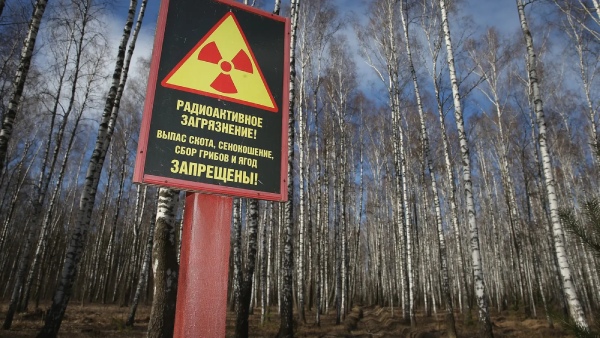


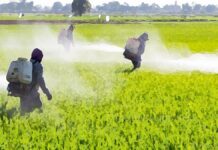









You can certainly see your expertise in the work you write. The world hopes for more passionate writers like you who are not afraid to say how they believe. Always go after your heart.
I have not checked in here for a while because I thought it was getting boring, but the last several posts are great quality so I guess I抣l add you back to my daily blog list. You deserve it, my friend 🙂